Today Current Affairs: 27th October 2021 for UPSC IAS exams, State PSC exams, SSC CGL, State SSC, RRB, Railways, Banking Exam & IBPS, etc
Table of Contents
Zero Budget Natural Farming:
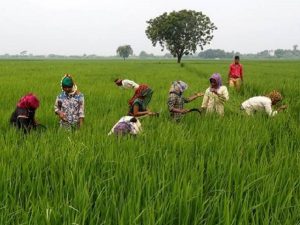
Women farmers in the hill State of Himachal Pradesh are gradually turning to non-chemical, low cost “natural farming”, which has not only provided them with a sustainable livelihood but also empowered them better.
- Launched in 2018, the State’s Prakritik Kheti Khushhal Yojana (PK3Y) is promoting the climate resilient Subhash Palekar Natural Farming (SPNF), also called ‘Zero Budget Natural Farming’.
- ZBNF is a set of farming methods, and also a grassroots peasant movement, which has spread to various states in India.
- ‘Zero Budget’ means without using any credit, and without spending any money on purchased inputs. ‘Natural farming’ means farming with Nature and without chemicals.
- Under ZBNF, neither fertiliser nor pesticide is used. Also, only 10 % of water is to be utilised for irrigation as compared to traditional farming techniques.
- Basic concept of ZBNF, which is different from organic farming, is to ensure that profit from supplementary crops is enough to cover the cost of production of the main crop.
- It has attained wide success in southern India, especially the southern Indian state of Karnataka where it first evolved.
- The movement in Karnataka state was born out of by the efforts of Padma Shri Subhash Palekar in Karnataka.
Operation Red Rose:

In 2020, Punjab’s Excise Department launched Operation Red Rose to curb illicit liquor trading and nail excise-related crimes.
- A year-and-a-half later, with the use of precise tracking and monitoring systems to check illicit distillation and smuggling of liquor, the results in terms of the number of suspects booked for crimes, convictions and rise in revenues are encouraging.
- The department has used several technologies — flow meters in bottling plants, QR code-based passes, GPS-enabled transport vehicles, and e-transit passes — to curb different modules of excise theft, which include direct supply of liquor from the manufacturing unit without paying excise duty; liquor smuggling from neighbouring States etc.
- The entire manufacturing process of liquor in the State is now online, which is monitored in real-time
Information Fusion Centre For Indian Ocean Region (IFC-IOR):
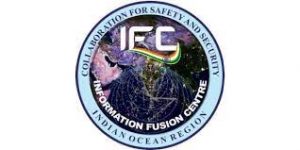
The Netherlands is interested in posting a Liaison Officer (LO) at the Indian Navy’s Information Fusion Centre for Indian Ocean Region (IFC-IOR) for Maritime Domain Awareness and information sharing, Vice Admiral René Tas, Commander of the Royal Netherlands Navy, says.
- The IFC has been established at the Navy’s Information Management and Analysis Centre (IMAC) in Gurugram, which is the single point centre linking all the coastal radar chains to generate a seamless real-time picture of the nearly 7,500-km coastline.
- Mandate: Strengthening maritime security in the region and beyond, by acting as a maritime information hub for the region.
- Partner countries: The Information Fusion Centre will serve countries that have White Shipping Information Exchange agreements with India.
- Through this Centre, information on “white shipping”, or commercial shipping, will be exchanged with countries in the region to improve maritime domain awareness in the Indian Ocean.
- It will also impart training in maritime information collection and sharing.
- Data is shared by virtual means – telephone calls, Faxes, emails and video conferencing. The centre also hosts liaison officers from foreign countries for quicker analysis of information and timely inputs.
China’s Legislature Has Adopted A New Border Law:
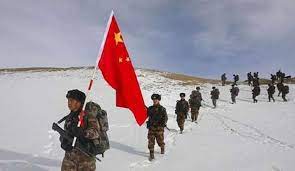
China’s legislature has adopted a new border law, to take effect on January 1, 2022 that calls on the state and military to safeguard territory and “combat any acts” that undermine China’s territorial claims.
- The law was first proposed in March 2021, a year into tensions that erupted along the Line of Actual Control (LAC) with India after the People’s Liberation Army (PLA) mobilised two divisions in forward areas and carried out multiple transgressions.
- China has unresolved border disputes with India and Bhutan.
- The new law would formalise some of China’s recent actions in disputed territories with both India and Bhutan, including the PLA’s massing of troops in forward areas along the India border, multiple transgressions across the LAC, and the construction of new “frontier villages” along the border with Bhutan.
- Article 22 of the law says the PLA “shall carry out border duties” including “organising drills” and “resolutely prevent, stop and combat invasion, encroachment, provocation and other acts”.
- The passing of the law coincides with stepped up Chinese activity along the land borders, which have mirrored actions in disputed waters in the East and South China Sea.
- The law will give a stamp of approval for the military’s recent actions in disputed areas.
White Dwarf:

An international team has reported a unique phenomenon in a white dwarf about 1,400 light years from Earth. They saw the white dwarf lose its brightness in 30 minutes.
- These gaps in brightness have been previously reported but the process usually takes place over a period of several days to months.
- The team observed the phenomena using NASA’s Transiting Exoplanet Survey Satellite (TESS).
- The white dwarf is part of a binary system called TW Pictoris, where a star and a white dwarf orbit each other.
- The two objects are so close to each other that the star transfers material to the white dwarf.
- As this material approaches the white dwarf it forms an accretion disk or a disk of gas, plasma, and other particles around it. TW Pictoris is located in the Pictoris constellation, and the binary system is about 1400 light years from us.
- The team notes that a process called magnetic gating may be at play. This happens when the magnetic field is spinning so rapidly it creates a barrier disrupting the amount of food the white dwarf can receive.
- The team hopes that this discovery will help us understand the physics behind accretion – how black holes and neutron stars feed material from their nearby stars.
- A typical white dwarf is half the size of our Sun and has a surface gravity 100,000 times that of Earth. Using the Hubble Space telescope and Transiting Exoplanet Survey Satellite (TESS), astronomers have identified several white dwarfs over the years.
Ayushman Bharat Health Infrastructure Mission:

The Prime Minister launched the Ayushman Bharat Health Infrastructure Mission.
- It is one of the largest pan-India schemes for strengthening healthcare infrastructure across the country.
- It is in addition to the National Health Mission.
- It will provide support to 17,788 rural Health and Wellness Centres in 10 ‘high focus’ states and establish 11,024 urban Health and Wellness Centres across the country.
- Through this, critical care services will be available in all the districts of the country with more than five lakh population through exclusive critical care hospital blocks, while the remaining districts will be covered through referral services.
- Under the scheme, a national institution for one health, four new national institutes for virology, a regional research platform for WHO (World Health Organization) South East Asia Region, nine biosafety level-III laboratories, and five new regional national centres for disease control will be set up.
- Objectives:
- To ensure a robust public health infrastructure in both urban and rural areas, capable of responding to public health emergencies or disease outbreaks.
- To establish an IT-enabled disease surveillance system through a network of surveillance laboratories at block, district, regional and national levels.
- All the public health labs will be connected through the Integrated Health Information Portal, which will be expanded to all states and UTs.
City With The Most Sustainable Transport System: Kerala

Kerala has won the award for the ‘city with the most Sustainable Transport System’.
- It will be presented by the Ministry for Housing and Urban Affairs.
- The award is given in recognition of the transport facilities in various states and Union Territories of India.
- The award has been given in recognition of the projects implemented — like Kochi Metro, Water Metro (Water Connectivity with the same experience as metro) and E-mobility — to enhance the transport facilities in the city of Kochi.
- The formation of the Kochi Open Mobility Network, which digitized and integrated various transport facilities, also helped to win the award.
Sustainable Transport
- It refers to any means of transportation that is ‘green’ and has low impact on the environment. It is also about balancing our current and future needs.
- Examples of sustainable transportation include walking, cycling, transit, carpooling, car sharing, and green vehicles.
Mullaperiyar Dam:
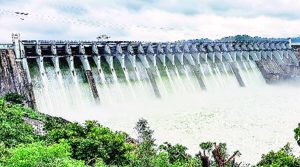
The Supreme Court has directed the Supervisory Committee to take an immediate and firm decision on the maximum water level that can be maintained at Mullaperiyar dam, amid torrential rain in Kerala.
- The SC constituted a permanent Supervisory Committee in 2014 to oversee all the issues concerning Mullaperiyar dam. The dam is a source of friction between Tamil Nadu and Kerala.
- Kerala said the water level should not go above 139 feet, the same as what the court had ordered on August 24, 2018, when the State was hit by floods. It is because the lives of 50 lakh people would be in danger if the water level in the dam is raised.
- However, Tamil Nadu objected to this decision citing the Supreme Court judgments of 2006 and 2014, which fixed the maximum water level at 142 feet.
- The court asked officials of Kerala and Tamil Nadu to interact responsibly and avert any danger to lives. The Court also made it clear that this was not an issue to play politics about.
- Now, the supervisory committee will have to decide about the maximum water level and inform the court about it.
- Mullaperiyar Dam is located in Kerala, it is operated by Tamil Nadu following an 1886 lease indenture for 999 years (the Periyar Lake Lease Agreement) that was signed between the Maharaja of Travancore and the Secretary of State for India for the Periyar Irrigation works.
- Constructed between 1887 and 1895, the dam redirected the river to flow towards the Bay of Bengal, instead of the Arabian Sea and provide water to the arid rain region of Madurai in Madras Presidency.
- The dam is located on the confluence of the Mullayar and Periyar rivers inKerala’s Idukki district.
- Tamil Nadu claims that although it has undertaken measures to strengthen the dam, the Kerala government has blocked any attempt to raise the reservoir water level – resulting in losses for Madurai farmers.
What Is Adjusted Gross Revenue (AGR)?

Bharti Airtel has decided to opt for the four-year moratorium on adjusted gross revenue (AGR) and spectrum payments, making it the second telco after Vodafone Idea to accept the offer, which was part of the recently announced telecom relief package.
- The Union Cabinet had in September approved several measures to extend lifeline to the cash-strapped telecom sector, including a four-year moratorium on payment of dues to the government arising out of the AGR judgment as well as payments of spectrum purchased in past auctions.
- The government had asked the telecom companies to convey their decision on opting for the four-year dues moratorium by October 29, while also giving 90 days’ time to indicate if they wanted to opt for converting the interest amount pertaining to the moratorium period into equity.
What is AGR?
- Adjusted Gross Revenue (AGR) is the usage and licensing fee that telecom operators are charged by the Department of Telecommunications (DoT). It is divided into spectrum usage charges and licensing fees, pegged between 3-5 percent and 8 percent respectively.
- As per DoT, the charges are calculated based on all revenues earned by a telco – including non-telecom related sources such as deposit interests and asset sales.
Report On CO2 Emissions: WMO
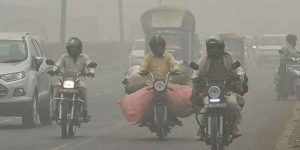
The World Meteorological Organisation (WMO) has recently released a report on CO2 emissions
Key findings:
- The increase in CO2 from 2019 to 2020 was slightly lower than that observed from 2018 to 2019 but higher than the average annual growth rate over the past decade.
- This is despite the approximately 5.6% drop in fossil fuel CO2 emissions in 2020 due to restrictions related to the pandemic.
- For methane, the increase from 2019 to 2020 was higher than that observed from 2018 to 2019 and also higher than the average annual growth rate over the past decade.
- For nitrous oxides, the increase was higher and also than the average annual growth rate over the past 10 years.
- Concentration of carbon dioxide (CO2), the most significant greenhouse gas, reached 413.2 parts per million in 2020 and is 149% of the pre-industrial level. Methane (CH4) is 262% and nitrous oxide (N2O) is 123% of the levels in 1,750 when human activities started disrupting earth’s natural equilibrium.
- Roughly half of the CO2 emitted by human activities today remains in the atmosphere. The other half is taken up by oceans and land ecosystems.
- From 1990 to 2020, radiative forcing — the warming effect on our climate — by long-lived greenhouse gases increased by 47%, with CO2 accounting for about 80% of this increase.
About WMO:
- The World Meteorological Organization (WMO) is a specialized agency of the United Nations dedicated to meteorology (weather), climatology (climate), operational hydrology (water) and other related geophysical sciences such as oceanography and atmospheric chemistry.
- Predessor organization — International Meteorological Organization (IMO) — founded in 1873.
Dadasaheb Phalke Award:
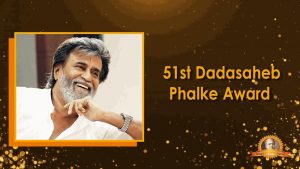
51st Dadasaheb Phalke Award was recently presented to Rajinikanth.
- It is the country’s highest film honour conferred for “Outstanding contribution for the growth and development of Indian cinema”.
- Dadasaheb Phalke Award was introduced by the government in 1969 and it was awarded for the first time to Devika Rani, “the first lady of Indian cinema”.
- Dadasaheb Phalke directed India’s first feature film Raja Harischandra (1913). He is known as “Father of Indian Cinema”.




